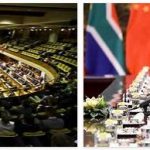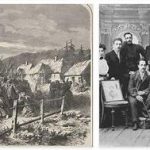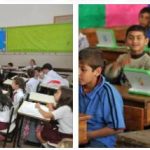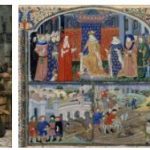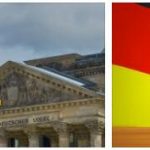South Africa is a state in the extreme south of the African continent with (2018) 57.8 million residents; The capital is Pretoria (Tshwane).
The Republic of South Africa covers the southern part of the African continent. The nearly 3,000 km long coastline is accompanied by two important ocean currents. The warm Agulhas Current in the east comes from near the equator and the cold Benguela Current in the west moves northwards from Antarctica. The southernmost point of the country and also of the continent is Cape Agulhas (34 ° 52 ′). This is where the Indian and Atlantic oceans meet.
Politics
According to the constitution that came into force on February 4, 1997 (modified several times), South Africa is a presidential republic in the Commonwealth. The constitution enshrines essential principles of the rule of law (basic and human rights, separation of powers, multi-party system). Head of state with a dominant position, commander in chief of the armed forces and head of government is the president, who is elected by the national assembly for a period of five years. He appoints the ministers and ambassadors and has the right to declare a state of emergency or a state of defense. He is represented by the Vice President. MC Ramaphosa has been in office since 2018as president. He is confronted with the task of rebuilding South Africa politically and economically. The focus is on fighting the rampant corruption, curbing widespread poverty and repairing the ailing education and health systems.
The composition of the cabinet depends on the party proportional representation in parliament. The legislature lies with the bicameral parliament, consisting of the National Assembly (NA with 400 MPs elected for 5 years in the proportional representation system (voting right from 18 years) and the National Council of Provinces (NCOP) with 90 by the parliaments of the provinces seconded members). The NCOP has the right to initiate legislation and the right to appeal against NA bills that affect provincial affairs. A mediation committee is provided for in the event of a conflict. Both chambers are equally involved in legislation.
The Constitutional Court, formed in 1995, consists of 11 members who are appointed by the President in consultation with the Cabinet. He can measure laws against the catalog of fundamental rights and declare them null and void. Its judicature, for which the jurisprudence of the German Federal Constitutional Court serves as a model, is in principle subject to all state action.
As a regional power, South Africa is also committed to development, stability and peace in southern Africa within the framework of the African Union. The country sends troops to peace missions on the African continent. As part of the BRICS Group, the association of emerging economies, the country works closely with China, India and Brazil and traditionally maintains good relations with the western industrialized countries.
National symbols
According to Trackaah website, the national flag of South Africa was introduced on April 27, 1994. It unites the colors of the African National Congress (ANC) with those of the Boer Republic. The cloth is divided by a light green Y with a white border on the long sides. The remaining upper field is red, the lower one blue. The triangle on the leech is black and is separated from the Y by a yellow stripe. The flag symbolizes the rapprochement of old traditions with the new time and the way into the common future.
A new national coat of arms was introduced on April 27, 2000. The sign, reminiscent of an African drum, shows two people from the Khoisan drawings on the Lintonfels. Traditional weapons cross over the shield: spear and knobkierie (club). The shield is framed by a pair of elephant tusks as a symbol of wisdom and eternity and two ears of wheat as a symbol of fertility. They are connected by the motto “! Ke e: / xarra // ke” (different people unite) in the extinct San language. The upper coat of arms shows the outspread wings of the secretary, which is considered a heavenly messenger and transmits the rays of the sun, which crown it and the coat of arms, to the earth.
National holiday: April 27th is Freedom Day, commemorating the first democratic elections in 1994 with the participation of all South Africans.
Parties
The spectrum of parties is broad. Important parties: African National Congress (ANC, founded in 1912), Democratic Alliance (DA, formed in 2000, party alliance dominated by the Democratic Party [DP, founded in 1989]), Economic Freedom Fighters (EFF, founded in 2013), Inkatha Freedom Party (IFP, since 1990 political party), National Freedom Party (NFP, founded in 2011), Congress of the People (COPE, founded in 2008 as a spin-off from the ANC), United Democratic Movement (UDM, founded in 1997) and Vryheidsfront Plus (VF Plus, founded in 1993).
Unions
The most important umbrella organizations are the ANC-affiliated Congress of South African Trade Unions (COSATU, founded 1985), the National Council of Trade Unions (NACTU, founded 1986) and the Federation of Trade Unions of South Africa (FEDUSA).
Military
The total strength of the professional army is around 66,000 men. The army (around 40,000 soldiers) is divided into five regional, mixed task forces, to which a total of two tank and 16 infantry battalions of different types and other combat support units are assigned; there is also a special forces brigade. The Navy has around 7,600 and the Air Force around 1,050 soldiers.

